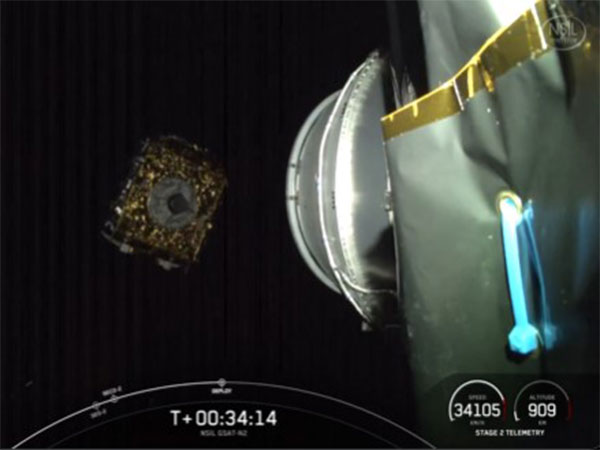SpaceX Successfully Launches India's GSAT-N2 Satellite: A Leap for Broadband and Connectivity
SpaceX has successfully launched India's GSAT-N2 satellite, enhancing the nation's broadband and connectivity capabilities. The collaboration aims to improve internet services, including remote areas and in-flight connectivity. The GSAT-N2 satellite boasts a 14-year mission lifespan and multi-beam architecture, serving India's growing communication needs.

- Country:
- United States
On Tuesday, Elon Musk's SpaceX successfully launched India's communication satellite GSAT-N2, marking a significant step in boosting the nation's broadband infrastructure. The state-of-the-art satellite aims to meet India's surging need for better broadband and in-flight internet connectivity.
Launched from Florida, SpaceX confirmed the mission's success at around 12:36 am, placing the satellite into its planned Geosynchronous Transfer Orbit. Developed by NewSpace India Limited, ISRO's commercial arm, GSAT-N2 is a 'Ka-band high-throughput communication satellite' designed for in-flight and Smart Cities connectivity.
India's Union Minister Jitendra Singh praised the collaborative effort between ISRO and SpaceX, describing it as crucial for improving internet access, especially in remote areas. NSIL reports that the satellite, weighing 4,700 kg, can deliver high-throughput communication services with 48 Gbps capacity, improving connectivity for areas such as the Andaman and Nicobar Islands and Lakshadweep.
Equipped with 32 user beams, GSAT-N2 ensures robust coverage, particularly in remote regions. Its multi-beam architecture allows frequency reuse, enhancing throughput significantly. With a 14-year mission life, the satellite promises to bolster India's communication infrastructure and user capacity substantially.
SpaceX's launch is part of a series marking their 112th, 113th, and 114th successful Falcon 9 missions this year, aligning with India's 2020 space sector reforms. NSIL is developing satellites to meet service demands under these reforms, showcasing a dynamic partnership and progress in space technology.
(With inputs from agencies.)










